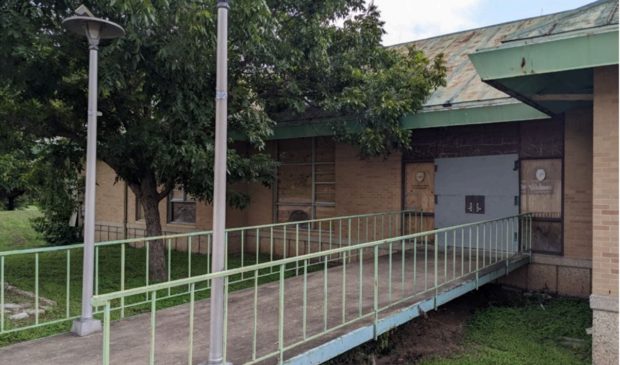Council backs senior center plan for Nash Hernandez building
Tuesday, December 13, 2022 by
Chad Swiatecki The city will move forward with plans to convert the long-idle Nash Hernandez building in East Austin into a senior activity center that could also offer programs for area schoolchildren.
Last week, City Council approved on its consent agenda an item brought by Council Member Pio Renteria directing the city manager to move forward with assisting the Intergenerational Day Center Advisory Group and relevant city departments in turning the building into a intergenerational resource and activity center, or IRAC. The resolution also directs staff to identify the licenses, certifications, possible funding sources and public-private partnerships that could come into play for the conversion, which is expected to cost between $8.2 million and $11 million.
The IRAC has been a volatile issue for residents of District 3, in part because Renteria’s wife Lori Cervenak-Renteria has been one of the most active supporters of the effort, and a previous long-range plan advocated using the building as more of a general community center.
The Parks and Recreation Department has also pushed back against the IRAC concept, noting that a recent feasibility study found that the best use of the property would be to convert it to administrative use for the parks department using $3.3 million the department has available.
The approval came without a recommendation of support from the Community Development Commission, which delayed a vote in October to gather more information and has not had a called meeting since. The issue is not on the group’s Thursday agenda.
The IRAC effort came under heavy criticism from Commissioner Bertha Delgado, who restated her objections to Council last week.
“We have a $3.3 million building that needs to be restored and needs to be given back to the community. We ask that you do not vote on Nash Hernandez today … that you postpone this item until a new mayor and Council is in place,” she said. “Due to a conflict of interest, Lori Renteria cannot be moving forward on this proposal with the University of Texas and Central Health, and we do not want those organizations to be in our neighborhood park.”
The 9,600-square-foot facility, which is located on the grounds of Holly Shores/Edward Rendon Sr. Metropolitan Park at Festival Beach, has been idle since 2011 and has been the subject of multiple studies and vision plans for how it could best be put to use.
Proponents of the IRAC concept argue the local senior community around Nash Hernandez has a need for more comprehensive activities than those offered at a variety of recreation centers in the area.
Community activist Ana Maciel said the assortment of senior activities already available throughout East Austin make the IRAC push for Nash Hernandez unnecessary.
“To hear that we want to change the Nash Hernandez building into a senior center is unusual to be presented at this time. The city of Austin and PARD has done a wonderful job making sure that senior activities are being presented throughout the city, especially in East Austin,” she said.
“East Austin has all these recreation centers that offer services to seniors, including Rudy Mendez (Recreation Center), Pan American (Recreation Center), and Turner-Roberts Recreation Center. We need to keep in mind that these centers the city put out there are to make sure the city communicates with your community.”
Renteria, whose term on Council ends this month, said community politics have clouded the issue of how to use the building to best meet the needs of nearby residents.
“The parks proposal is to make that building into an administrative office. Our proposal is for them to work with seniors, which they’ve been doing,” he said. “It’s more of a personal thing they’re discussing than what it is we’re trying to do, which was to address our senior problem. I live right there in eyesight of that building … for them to say they’re the neighborhood, I’ve lived in the same house for 43 years now and I’m not going to stand here and get assaulted by special interests.”
The Austin Monitor’s work is made possible by donations from the community. Though our reporting covers donors from time to time, we are careful to keep business and editorial efforts separate while maintaining transparency. A complete list of donors is available here, and our code of ethics is explained here.
You're a community leader
And we’re honored you look to us for serious, in-depth news. You know a strong community needs local and dedicated watchdog reporting. We’re here for you and that won’t change. Now will you take the powerful next step and support our nonprofit news organization?




